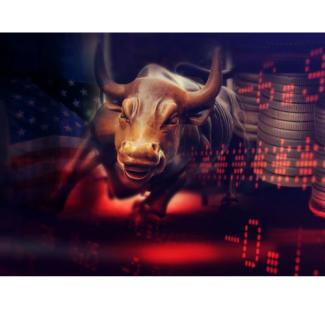
What’s Next for The Markets
To say that every year is different and has its surprises has never been more true than 2025. The year has been filled with headlines about tariffs, inflation, and disruption. President Trump has negotiated, called out and threatened most of the world’s leaders to get Tariff deals done only to extend the deadline on numerous occasions. Initially investors panicked at the possibility of higher tariffs and higher prices. Analysts and especially the Federal Reserve cautioned that higher tariffs would likely cause higher inflation and lead to higher not lower interest rates. In February the stock markets swooned only to bottom in April and recover all that it had lost and add to gains. The S&P 500 closed at 6,204.95 on June 30, 2025, with a year-to-date (YTD) gain of 6.58%. The markets were also concerned about a war in the Middle East and the potential for higher gas prices and a tax bill that would add to the ever-growing debt. Israel and the United States bombed Iran’s nuclear facilities but the war ended after 12 days. Gas prices rose initially and fell soon after. The OBBBA tax billed was signed on July 4th and markets didn’t seem to flinch. This past Friday, President Trump once again announced punitive tariffs that will go into effect August 1, the markets didn’t react much.
So what’s ahead and why could things continue to surprise you?
When you block out the noise, you find that the overall economics in the US appears to be in a favorable range. For inflation to drop, we needed people to spend less. Uncertainty with tariffs has caused consumers to slow their big decisions like buying houses but led others to increase purchases to front-run the tariffs. The net result is that inflation has been stable but seems to be finally seeing some increases due to the tariffs. Employment has remained weaker which if it continued to remain week might give the Federal Reserve more reason to lower rates. Meanwhile, corporate profits reported this month have been pretty good with domestic companies indicating that as much as 50% of profits have been attributable to the US dollar falling 10% this year, the most in history. A falling dollar makes other currencies stronger and makes US products less expensive to buyers outside of the US. Once again, there are positives to negative circumstances.
Bottom line: staying the course has paid off for investors this year despite the over-whelming uncertainty this President has created. If the tariffs do cause more inflation than acceptable to the Federal Reserve, expect then to hold off on lowering interest rates and the potential for stagflation (stagnation with higher prices). That’s not good for either bonds or stocks. However, if you assume that the tariff deals are more moderate and the effects of the tariffs over-estimated, then consumers and business should regain their ability to make longer term decisions and the markets will respond positively.
Word to the wise: once again I will remind all of our clients not to use the lens of your political beliefs to make financial decisions with your investments. We are doing everything we can when actively managing your investments to hedge some risks and lower our portfolio’s volatility in the event unforeseen circumstances present. At some point, we may be willing to eliminate hedges and increase our exposure to equity markets with the goal of capturing more of the upside. Please stay tuned and feel free to contact us with questions.

